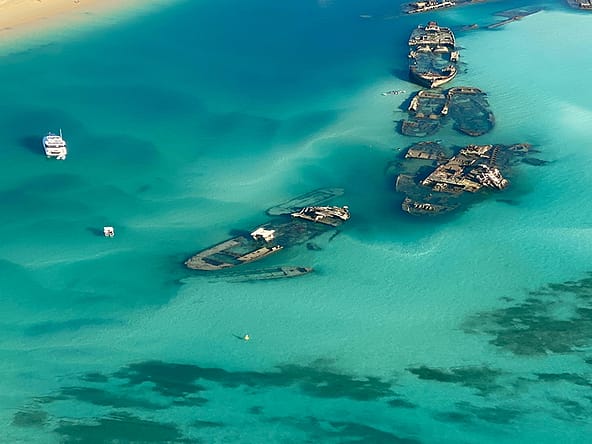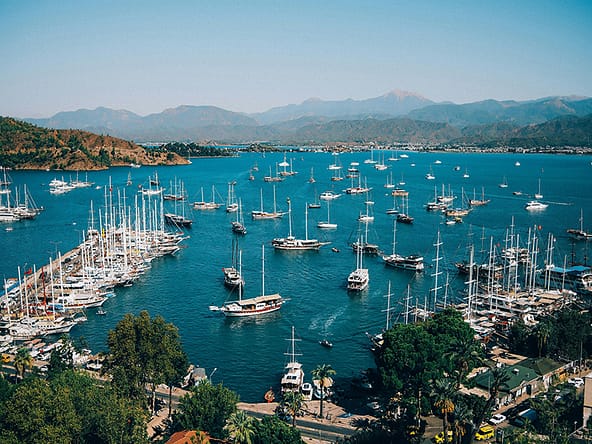Cyprus is the third largest island in the Mediterranean, situated directly in the center of the sea. With its pleasant weather, friendly locals, mouthwatering cuisine, and much more, it’s one of the best options for an ideal living.
What are the areas of Northern Cyprus?
The 3,354 square kilometer Turkish Republic of Northern Cyprus (TRNC) is divided into six administrative regions: Nicosia, the capital; the port cities of Famagusta and Girne; İskele, which includes the Karpaz peninsula; Güzelyurt (Omorfo); and Lefke, one of the world’s most significant citrus regions. Every district has a shoreline, with the exception of Nicosia, the capital.
Whichever region in North Cyprus you call home, you will be able to personally witness the island’s rich past, the melting pot of numerous cultures, and the ways in which the people of the island preserve their traditions.
What is transport like in Northern Cyprus?
Since the longest trip in Northern Cyprus (Yeşilırmak–Zafer Burnu) takes up to four hours, depending on traffic, personal vehicles, rental car services, taxis, and bus services are the most common modes of transportation for short distance travel.
While finding a taxi is quite simple, travellers can also be picked up at terminals and stops that are situated in specific areas by buses and minibuses. The bus companies that are most well-known are Göçmen, MLS, and Itimat. In addition to this, you can rent a bicycle inside the city using a credit card at the stations set up by the local governments. In urban regions, roads are often two-way and split into intercity distances. Drivers should use caution as vehicles on the island travel on the left side of the
road.
What is the climate like in Northern Cyprus?
Cyprus enjoys a typical Mediterranean climate. Winters are moderate and wet, and summers are scorching and dry. The lowest average temperature is approximately 14 ºC, despite the annual average temperature being 25.6 ºC. There are 250–300 sunny days on average each year in Northern Cyprus.
What is Education like in Northern Cyprus?
The four levels of education in TRNC are kindergarten, which begins at age five, followed by five years of primary school, three years of secondary school, four years of high school, and university or higher
education.
Northern Cyprus has created education that complies with European norms. Trainings are given for Turkish Universities in addition to preparing pupils for university study abroad, including GCSE and A Level exams. Famagusta is also home to Eastern Mediterranean University, which consistently ranks in the top 100 universities worldwide. The TRNC is home to a total of 25 universities.
Is Northern Cyprus safe to visit?
3.50 points represents the safety index for all of Cyprus (0 lowest, 10 highest). Cyprus has one of the lowest rates of crime and is among the safest countries in the world, with a global average of 5.29 points. With a high police presence, a low crime rate, and a civilized community, Northern Cyprus provides a safe and tranquil living environment.
What is the Health Service like in Northern Cyprus?
The TRNC has a very advanced healthcare system. There are health centers in almost every region that offer services to the nearby towns and cities. You can take advantage of various health services during business hours as well as the Emergency Service 24/7, all at reasonable costs thanks to cutting-edge medical technology and skilled healthcare professionals. The benefits of the TRNC health system also include pharmacies, ambulance stations, and public and private hospitals in each area.
What is food like in Northern Cyprus?
Ancient antiquities and the diverse and delectable Cypriot cuisine are only two examples of how its thousands of years of history and the blending of innumerable civilizations are felt here. The first dishes that spring to mind when discussing Cyprus cuisine are Molehiya, a Middle Eastern dish, Peach Kebab, which is exclusive to Cyprus, Halloumi, which is loved by people everywhere, kolakas/kolokas, which is widely consumed in Mediterranean countries, Cyprus ravioli pirohu, which comes from the Lusignans, and one of the most delicious dishes, kleftiko.
What activities are there to do in Northern Cyprus?
To be honest, there’s so much to do that we’re not sure where to begin! You will come across history everywhere you go in Northern Cyprus, from the historic Selimiye Mosque in Nicosia to the Ancient City of Soli in Güzelyurt, and from the ancient Salamis Ruins in Famagusta to the Apostolos Andreas Monastery in Dipkarpaz. Cyprus is a history buff’s dream come true.
Some of the most well-liked and spotless beaches in the world may be found in Northern Cyprus. Both residents and visitors favor Mackenzie Beach, Palm Beach, Silver Beach, and Glapsides Beach. Although you can swim practically anywhere on the island, we nevertheless advise you to stick to the beaches that have private and public facilities for your safety.
Camping is one of the most popular pastimes in North Cyprus, especially among young people. Campers’ favorite sites include the mountains of Kyrenia, although they also like the beach, the forest, and designated caravan grounds.
There are activities in Northern Cyprus that suit every kind of lifestyle, including windsurfing, parasailing, diving, hiking and trekking, hunting, picnics, cultural festivals, eco festivals, and more.
Why should you visit Northern Cyprus?
Northern Cyprus is genuinely “a piece of heaven” with its beautiful scenery, vibrant living, and balmy sun. You will live a happy and fulfilling life in Cyprus and get to witness the island lifestyle that honors the Mediterranean culture.
Source: www.northernland.com
For information on North Cyprus property please click the link.





